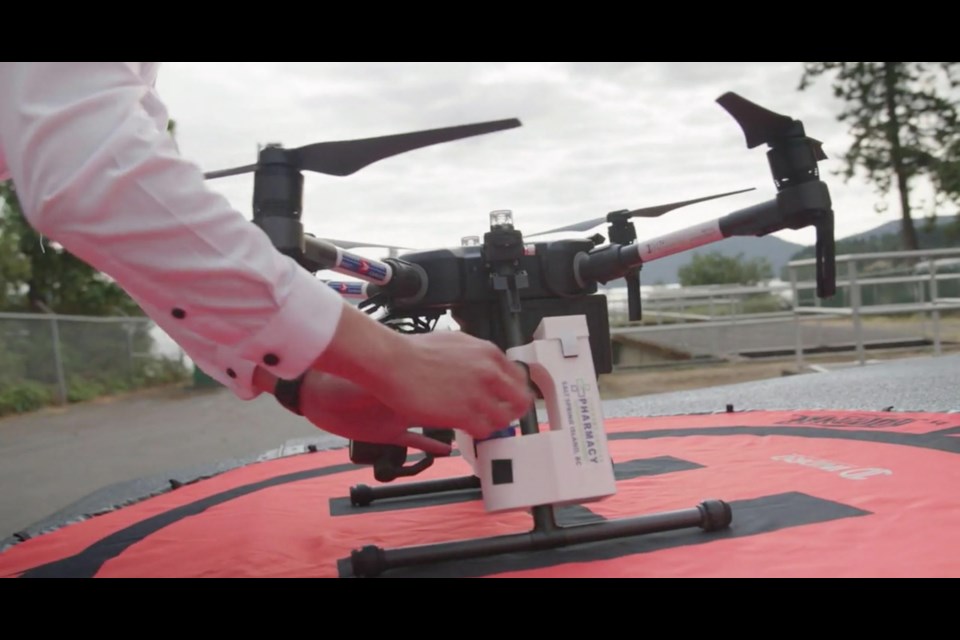An EpiPen and opioid-overdose drug have been delivered to a grocery store on Salt Spring Island from a pharmacy in Duncan in what’s believed to be the first beyond-visual-line-of-sight drone delivery in Canada.
The drone travelled the six kilometres over water to Salt Spring in 11 minutes.
The flight was part of a Transport Canada trial conducted by Canada Post and Salt Spring-based InDro Robotics to test the beyond-visual-line-of-sight capabilities of a drone to deliver a package over open water.
The trial is being conducted to see if it’s possible to deliver prescriptions via drone to remote areas.
Jaime Gomes, Canada Post’s project leader, said drone delivery could improve service in parts of the country. Testing is ongoing, and will include simulating deliveries over bodies of water, icy roads and challenging terrain to temporary camps and other remote locations.
The Aug. 19 trial included delivering an EpiPen or epinephrine autoinjector, for severe allergic reactions, and naloxone, used in opiate overdoses, from a London Drugs mobile unit in Duncan to the Country Grocer store on Salt Spring Island. There was also a trial direct-delivery flight to a patient’s home on Salt Spring.
The drone flew itself most of the way, planning the route itself and making adjustments for weather or other aircraft, said Philip Reece, chief executive of InDro Robotics, which specializes in unmanned aerial vehicles. A pilot on Salt Spring Island monitored the flight as a safety precaution.
The drone was equipped with a camera and the ability to listen for other aircraft and send out alerts to nearby pilots to let them know an unmanned aerial vehicle was in operation.
The drone used, which flew at 50-60 km/h about 75 metres above the ground, can carry a maximum of 5.5 kilograms, though other models can carry up to 20 kg. When it reached the customer’s home, it landed on an orange pad marked with an H indicating the landing zone.
Chris Chiew, pharmacy general manager at London Drugs, said in the “very near future,” it will be possible to deliver prescription medications to an abundance of areas not accessible by vehicle.
“The ability to provide medications to patients in remote areas that would otherwise have to travel hours to obtain pharmacy service is significant in so many ways.”
Reece said this kind of delivery will work for many parts of the Canadian North, and remote hospitals where the drones can land on heli-pads. Reece estimates such deliveries could be rolled out in about a year.
The data gleaned from the Aug. 19 trials will be used by Transport Canada to establish beyond-visual-line-of-sight regulations across Canada. In the U.S., the Federal Aviation Authority requires that drone operators be able to see the drone at all times.
A London Drugs statement said the company hopes to expand drone delivery in Western Canada beyond prescriptions to other products. “But for right now, we’re taking steps to ensure that the prescriptions we are delivering arrive in a safe and effective manner.”
Loblaws, the parent company of Shoppers Drug Mart, said it has been exploring the possibilities drone technology offers, but the company would not divulge any details about its plans.
Amazon, which has been promising that drone delivery is only months away, is seeking FAA approval for the service in the U.S. It has petitioned the FAA to exempt it from some regulations, including the requirement that drone operators be able to see the drone.
— With files from Vancouver Sun



